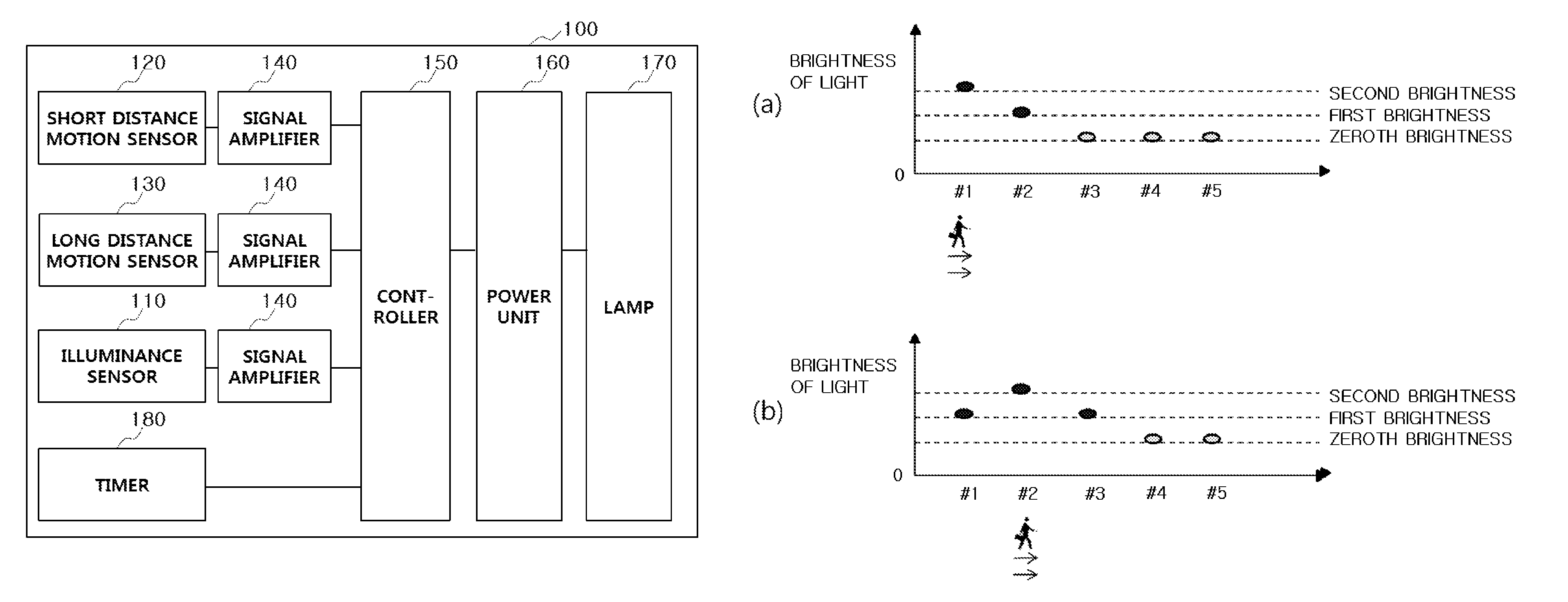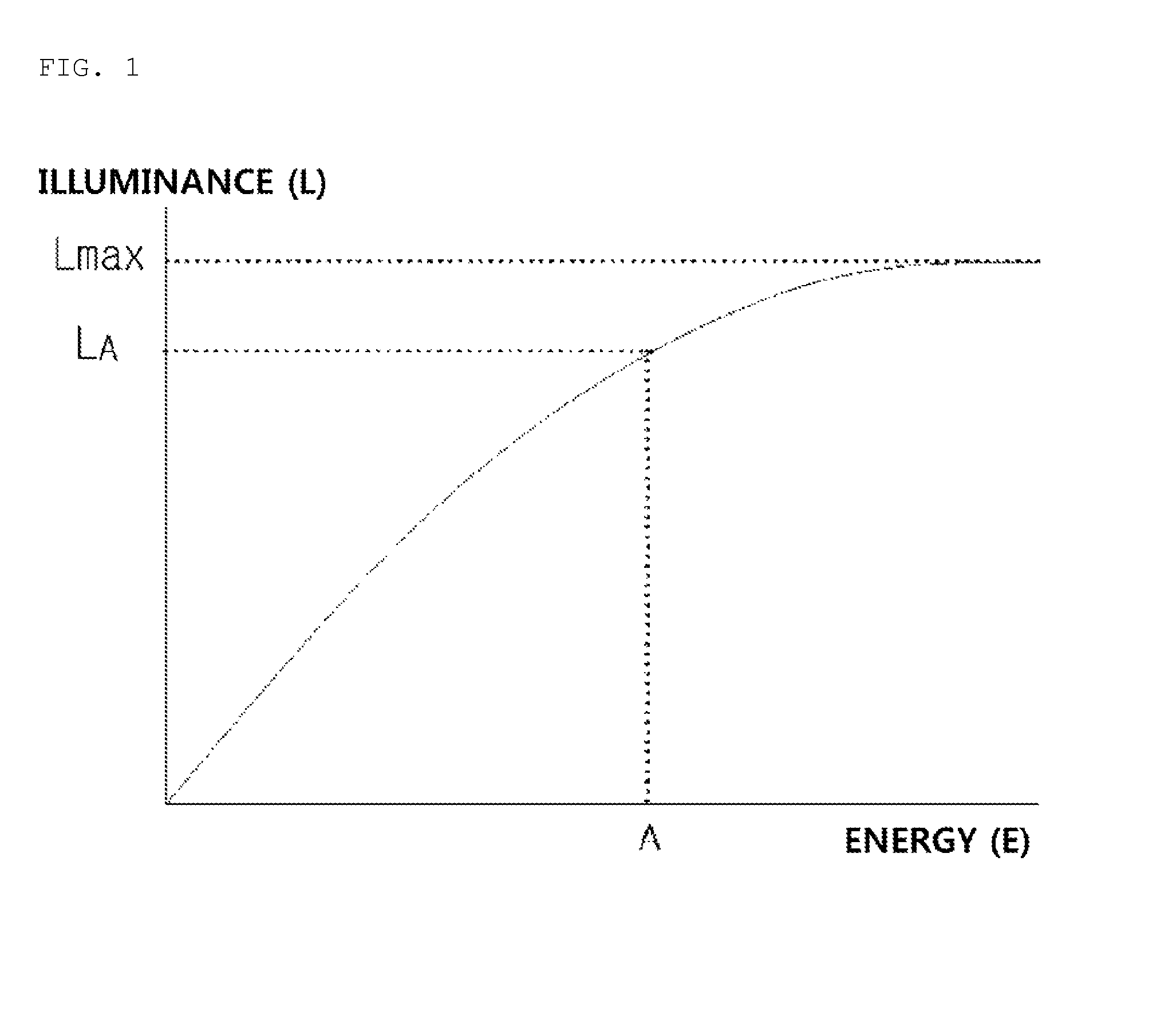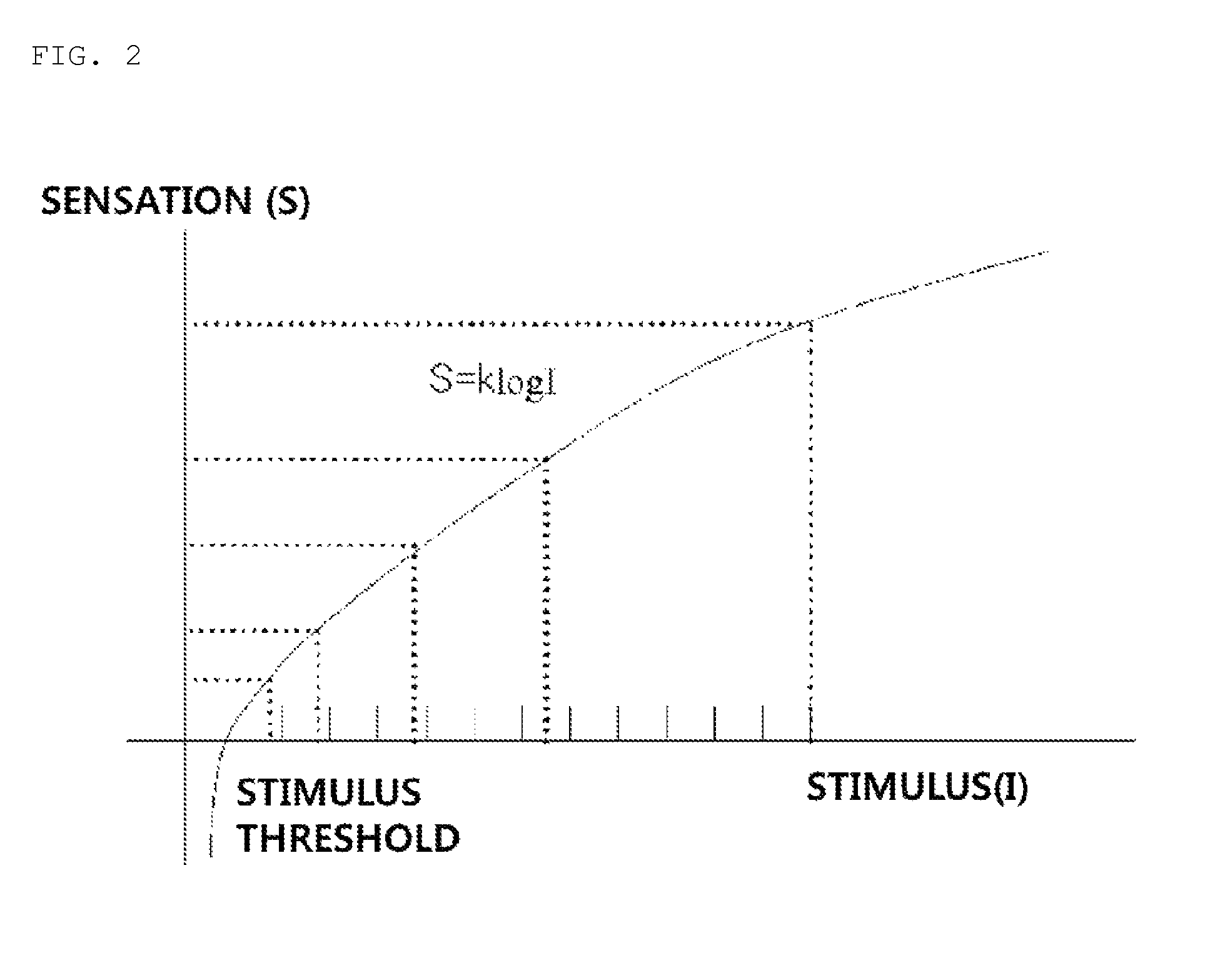Lighting apparatus having complex sensor and interworking type lighting system
a technology of interworking type and light source, which is applied in the direction of energy-efficient lighting, electroluminescent light sources, sustainable buildings, etc., can solve the problems of reducing affecting the effect of lighting quality, and affecting the safety of the lighting system, so as to reduce the brightness of the lamp, reduce the risk of accidents, and relieve the effect of anxiety
- Summary
- Abstract
- Description
- Claims
- Application Information
AI Technical Summary
Benefits of technology
Problems solved by technology
Method used
Image
Examples
Embodiment Construction
[0022]Hereinafter, the embodiments of the present invention will be described in detail with reference to the accompanying drawings.
[0023]FIG. 1 is a graphic view illustrating the relationship between illuminance and energy. As can be seen from FIG. 1, illuminance rapidly increases in proportion to rapid increase in energy consumption, but above a certain level of illuminance LA, illuminance gently increases as compared to increase in energy consumption.
[0024]That is, energy consumption is great, but illuminance does not considerably increase in proportion to the energy consumption, above the certain level of illuminance. Therefore, it is desirable to slightly lower illuminance below the maximum illuminance within a range imperceptible to people, in consideration of energy efficiency.
[0025]FIG. 2 is a graphic view showing the relationship between stimulus and sensation. As exemplarily shown in FIG. 2, the human body constantly responds to external stimuli. There are individual senso...
PUM
 Login to View More
Login to View More Abstract
Description
Claims
Application Information
 Login to View More
Login to View More - R&D
- Intellectual Property
- Life Sciences
- Materials
- Tech Scout
- Unparalleled Data Quality
- Higher Quality Content
- 60% Fewer Hallucinations
Browse by: Latest US Patents, China's latest patents, Technical Efficacy Thesaurus, Application Domain, Technology Topic, Popular Technical Reports.
© 2025 PatSnap. All rights reserved.Legal|Privacy policy|Modern Slavery Act Transparency Statement|Sitemap|About US| Contact US: help@patsnap.com



